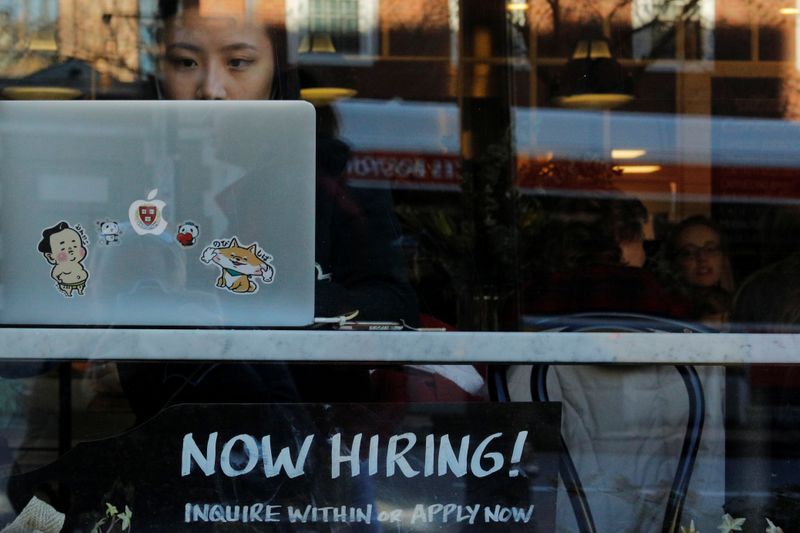By Lucia Mutikani
WASHINGTON (Reuters) -U.S. job openings increased in October, but many of the help wanted signs could disappear amid widespread restrictions on businesses to slow rapidly spreading new COVID-19 infections.
The month-old Job Openings and Labor Turnover Survey, or JOLTS report from the Labor Department on Wednesday also showed a rise in layoffs, though a chunk reflected the discharge of temporary workers hired for the 2020 Census.
The United States is in the throes of a new wave of coronavirus infections, with the number of confirmed cases crossing the 15 million mark on Tuesday.
“The labor market remains miles and miles away from the best economy in 50 years in February before the pandemic struck,” said Chris Rupkey, chief economist at MUFG in New York.
“October job openings are likely to disappear in a hurry relatively speaking by the end of the year with new strict stay-at-home orders issued in California this month, which is the most populous state in the country.”
Job openings, a measure of labor demand, increased 158,000 to 6.65 million on the last day of October. Vacancies are below their 7 million level in February. There were increases in job openings in the healthcare and social assistance industry.
State and local government education saw a 23,000 increase in vacancies in October. Surprisingly, local government education has shed jobs in September, October and November. There were education job losses at state governments in September and October.
The overall job openings rate edged up to 4.5% from 4.4% in September. Hiring dipped to 5.81 million in October from 5.89 million in the prior month. That lowered the hiring rate to 4.1% from 4.2% in September.
Layoffs increased 243,000 to 1.7 million. That included 91,000 layoffs in the federal government, largely due to the departure of the temporary Census workers. The layoffs rate rose to 1.2% from 1.0% in September.
U.S. financial markets were unmoved by the data.
STEADYING OUT
“The JOLTS data are consistent with many other labor market indicators that point to steadying out in the job market lately following a period of very strong hiring,” said Daniel Silver, an economist at JPMorgan in New York.
The JOLTS report followed on the heels of news last Friday that the economy created 245,000 jobs in November, the smallest gain in nonfarm payrolls since the jobs recovery started in May and the fifth straight monthly slowdown in employment growth. The economy has recouped only 12.4 million of the 22.2 million jobs lost in March and April.
Apart from the business restrictions to curb the out-of- control coronavirus infections, the labor market has lost momentum as more than $3 trillion in government pandemic relief has almost dried up.
The stimulus package helped millions of unemployed Americans cover daily expenses and companies keep workers on payrolls, leading to record economic growth in the third quarter.
A separate report from the Commerce Department on Wednesday showed wholesale inventories surged 1.1% in October, revised up from the 0.9% as estimated last month. The component of wholesale inventories that goes into the calculation of gross domestic product jumped 1.3% in October.
Congress is negotiating another relief package. Even with a vaccine on the way, economists are warning of a slow and painful recovery for the labor market and the broader economy.
“Vaccines are on the way but it is important that Congress takes action to support the unemployed and small businesses during the period before sectors that cannot operate in a socially distanced manner can reopen,” said Conrad DeQuadros, senior economic advisor at Brean Capital in New York.
There were 1.6 unemployed workers for every vacancy in October.
“Another way to think about this, for every 16 workers who were officially counted as unemployed, there were only available jobs for 10 of them,” said Elise Gould, senior economist at the Economic Policy Institute in Washington. “That means there were no jobs for 4.2 million unemployed workers. And this misses the fact that many more weren’t counted among the unemployed.”
(Reporting By Lucia Mutikani; Editing by Andrea Ricci)





















